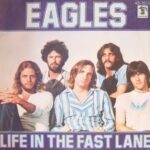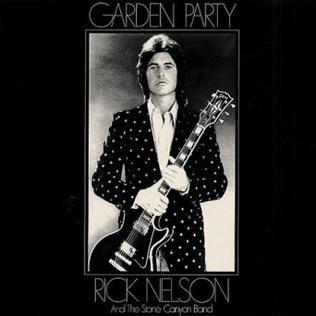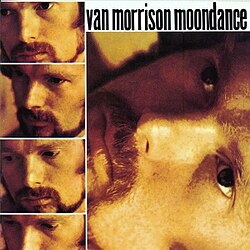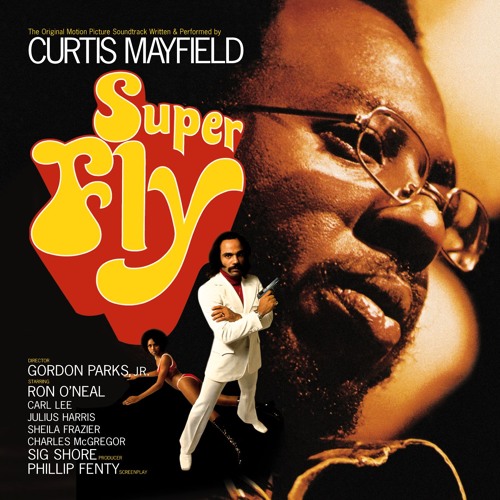 The Eagles’ Life in the Fast Lane, released in 1976 on their legendary Hotel California album, is a song that perfectly captures the seductive danger of the rock ‘n’ roll lifestyle. It’s an unflinching, adrenaline-fueled exploration of excess, temptation, and the pursuit of thrills, all wrapped in some of the most iconic riffs in classic rock history. From Joe Walsh’s razor-sharp guitar to Glenn Frey and Don Henley’s commanding vocals, every element of the track reinforces its high-octane theme, making it one of the most electrifying entries in the Eagles’ storied catalog.
The Eagles’ Life in the Fast Lane, released in 1976 on their legendary Hotel California album, is a song that perfectly captures the seductive danger of the rock ‘n’ roll lifestyle. It’s an unflinching, adrenaline-fueled exploration of excess, temptation, and the pursuit of thrills, all wrapped in some of the most iconic riffs in classic rock history. From Joe Walsh’s razor-sharp guitar to Glenn Frey and Don Henley’s commanding vocals, every element of the track reinforces its high-octane theme, making it one of the most electrifying entries in the Eagles’ storied catalog.
Unlike some of the band’s more mellow or introspective tracks, Life in the Fast Lane is built for motion. It’s a song that feels like it’s hurtling down an endless highway, headlights cutting through the night as the engine roars beneath you. The song’s opening guitar riff is immediately arresting — jagged, insistent, and perfectly indicative of the chaos and allure at the heart of the lyrics. From that first note, it’s clear this isn’t a contemplative ballad; it’s a musical embodiment of risk, recklessness, and unbridled energy.
The Power of the Opening Riff
Joe Walsh’s guitar work on this track is nothing short of iconic. The opening riff, with its gritty, overdriven tone, serves as both the song’s thematic and musical anchor. It’s instantly recognizable, a jagged edge that cuts through the smooth harmonies that would later dominate much of the Eagles’ work. What makes this riff so compelling is its dual nature: it’s raw and aggressive, yet structured and melodic, reflecting the tension between chaos and control that runs throughout the song.
The riff is more than just an attention-grabbing hook; it’s a character in the story. It mirrors the relentless pace of the song’s narrative, conveying urgency and danger while drawing listeners into the world of fast living and fast cars. Every time the riff recurs, it reinforces the song’s central themes, making the music and lyrics inseparable in their impact.
Lyrics: Tales of Excess
The lyrics of Life in the Fast Lane are as sharp and incisive as Walsh’s guitar. Penned by Joe Walsh, Glenn Frey, and Don Henley, the words paint a vivid picture of a life lived on the edge: a mixture of allure, thrill, and moral recklessness. Lines like “He was a hard-headed man, he was brutally handsome, and she was terminally pretty” introduce the characters with cinematic precision, instantly drawing the listener into their world.
The song’s narrative follows a couple chasing adrenaline and indulgence, wrapped in wealth, beauty, and danger. The chorus — “Life in the fast lane, surely make you lose your mind” — encapsulates the inevitable consequences of such a lifestyle. There’s a warning embedded in the song, but it’s delivered with such swagger and groove that it never feels preachy. Instead, the listener is invited to vicariously experience the thrill, the recklessness, and the intoxicating allure of living on the edge.
The clever wordplay and vivid imagery elevate the song beyond a simple tale of excess. Each line is carefully crafted to convey character, emotion, and setting, while maintaining the forward-driving momentum of the music. It’s storytelling that doesn’t slow the pace, perfectly aligned with the song’s sonic intensity.
Vocals and Harmonies
Glenn Frey and Don Henley’s vocal performances are central to the song’s impact. Henley’s lead vocals carry a sense of urgency and weariness, embodying the duality of thrill and consequence that defines the lyrics. Frey’s backing vocals provide contrast and depth, adding layers of harmony that enhance the song’s richness without diminishing its raw edge.
The interplay between the vocalists is subtle but effective. Henley’s delivery conveys both excitement and foreboding, capturing the intoxicating highs and looming dangers of life in the fast lane. Frey’s harmonies, meanwhile, offer a musical counterbalance, giving the song a sense of fullness and sophistication that keeps it from feeling one-dimensional. Together, their voices create a sound that is both gritty and polished, just like the world they’re describing.
Rhythm and Groove
Underlying the song’s narrative and melodic elements is a rhythm section that drives the entire piece with relentless energy. Randy Meisner’s bass lines are steady and propulsive, anchoring the song while providing a groove that is both tight and flexible. Don Henley’s drumming is precise and dynamic, alternating between driving beats and subtle fills that punctuate the music’s tension and release.
The rhythm section’s synergy is crucial to the song’s impact. It provides a foundation for Walsh’s guitar to cut through, for the vocals to soar, and for the narrative to unfold at a breakneck pace. The pulse of the song mirrors its title: fast, relentless, and impossible to resist. It’s music that physically propels the listener forward, much like the reckless characters at its center.
Guitar Solo: Pure Adrenaline
Joe Walsh’s guitar solo is a highlight of the track, combining technical prowess with raw emotion. The solo is aggressive and unrestrained, yet always grounded in the song’s core riff and rhythm. It’s a perfect illustration of the tension between freedom and structure that runs throughout Life in the Fast Lane.
The solo isn’t just about technical display; it’s a narrative device. Each bend, slide, and rapid-fire lick adds to the sense of danger, speed, and exhilaration. Walsh’s phrasing communicates excitement and chaos simultaneously, reinforcing the story told by the lyrics and the urgency conveyed by the rhythm section. It’s a masterclass in how a guitar solo can enhance a song’s theme while still thrilling the listener.
Production and Sonic Clarity
The production on Life in the Fast Lane is meticulous, balancing the song’s raw energy with clarity and polish. Producer Bill Szymczyk ensured that every element — from Walsh’s searing guitar to Henley’s vocals to the propulsive rhythm section — had space to breathe while contributing to the overall drive of the track. The result is a song that feels immediate and live, yet sonically rich and layered.
The mix emphasizes the interplay between instruments, allowing the riffs, rhythms, and harmonies to interact in dynamic ways. This attention to detail ensures that the song’s energy is palpable on every listening device, from vinyl to radio to modern streaming platforms. The production captures the essence of the song’s themes: controlled chaos delivered with style and precision.
Cultural Impact and Legacy
Life in the Fast Lane has endured as one of the Eagles’ most celebrated songs, representing both their musical evolution and the broader cultural moment of the mid-1970s. It captures the hedonism, ambition, and moral ambiguity that defined much of American culture during that era, offering a soundtrack for listeners navigating their own metaphorical highways.
The song’s influence extends beyond the Eagles’ catalog. Its riff-driven structure, narrative focus, and blend of rock and storytelling have inspired countless musicians across genres. It remains a staple of classic rock radio and a fan favorite at Eagles concerts, a track that continues to resonate with new generations while retaining the punch and immediacy that made it a hit upon release.
Life in the Fast Lane also embodies the duality of rock music as both entertainment and social commentary. While the song is undeniably fun and exhilarating, it also subtly critiques the consequences of excess and recklessness. This balance — between thrill and caution, exuberance and consequence — is part of what gives the track its enduring relevance and depth.
Thematic Resonance
At its heart, Life in the Fast Lane is about tension: between desire and consequence, freedom and responsibility, thrill and peril. This tension is reflected in every element of the song, from the jagged riffs to the urgent vocals to the propulsive rhythm. It’s music that mirrors life on the edge, a sonic representation of risk and reward, and it captures a universal truth: living fast can be exhilarating, but it comes at a cost.
The song’s narrative of high-octane living resonates across decades because it taps into a fundamental human fascination with risk, speed, and thrill. Whether interpreted literally as tales of nightlife and excess or metaphorically as a meditation on ambition and temptation, the song speaks to the allure and danger of living life at full throttle.
Live Performances: High Voltage
Experiencing Life in the Fast Lane live amplifies its energy exponentially. The Eagles bring the track to life with a precision and intensity that mirrors the song’s recorded power while adding the unpredictability of live performance. Guitar riffs roar through arenas, Henley’s vocals slice through the mix, and the rhythm section drives the band and audience alike into a shared experience of exhilaration.
The live context also highlights the song’s endurance. Decades after its release, it continues to energize crowds, eliciting cheers, singalongs, and moments of pure rock euphoria. Its combination of narrative, musicality, and sheer energy ensures that every performance feels both timeless and immediate.
Closing Thoughts
Life in the Fast Lane is a triumph of rock music, a song that blends narrative depth, instrumental brilliance, and visceral energy into a seamless, unforgettable package. Joe Walsh’s searing riffs, Glenn Frey and Don Henley’s compelling vocals, and the tight, driving rhythm section create a track that is both exhilarating and thematically rich. It’s a song that captures the thrill of excess, the danger of living fast, and the irresistible pull of the open road.
The track’s enduring appeal lies in its balance of fun and caution, energy and craft, chaos and control. It’s a song that can be enjoyed on multiple levels: as a high-octane musical experience, as a cautionary tale about excess, and as a masterclass in classic rock composition. Life in the Fast Lane remains a defining moment in the Eagles’ catalog, a track that continues to resonate with listeners more than four decades after its release.
Ultimately, Life in the Fast Lane is about motion, excitement, and the seductive power of risk. It’s a song that invites you to hit the gas, embrace the thrill, and feel the music course through you like the rush of the open road. It’s a reminder of why the Eagles became one of rock’s most enduring bands: they knew how to capture the exhilaration of life in sound, and this track stands as a shining example of that mastery.


